Caricature and humour
Portraits of bohemian life in late 19th-century French books
The French freedom of press law, implemented in 1881, meant that pre-publication censorship was eliminated, creating the ideal conditions for the emergence of hundreds of illustrated magazines that also benefited from the development of lithography, a process that sped up the printing of images.
These periodicals documented everyday life through text and illustration, frequently making use of caricature, both as a form of political and social criticism and in a purely humorous dimension. The latter was often associated with the representation of bohemian life, widely celebrated during the period of peace and prosperity known as the Belle Époque, between the end of the Franco-Prussian War in 1871 and the outbreak of the First World War in 1914.
The imagery of popular entertainment in venues and cafés, as depicted by the illustrators and artists who contributed to these magazines, moved into the erudite world of deluxe editions, produced in small print runs so that they could include drawings, watercolours or original prints. This is the case with Cours de danse fin-de-siècle, a book that came about thanks to the success of a series of articles and illustrations on the can-can, published in 1891 as supplements of the Gil Blas magazine.
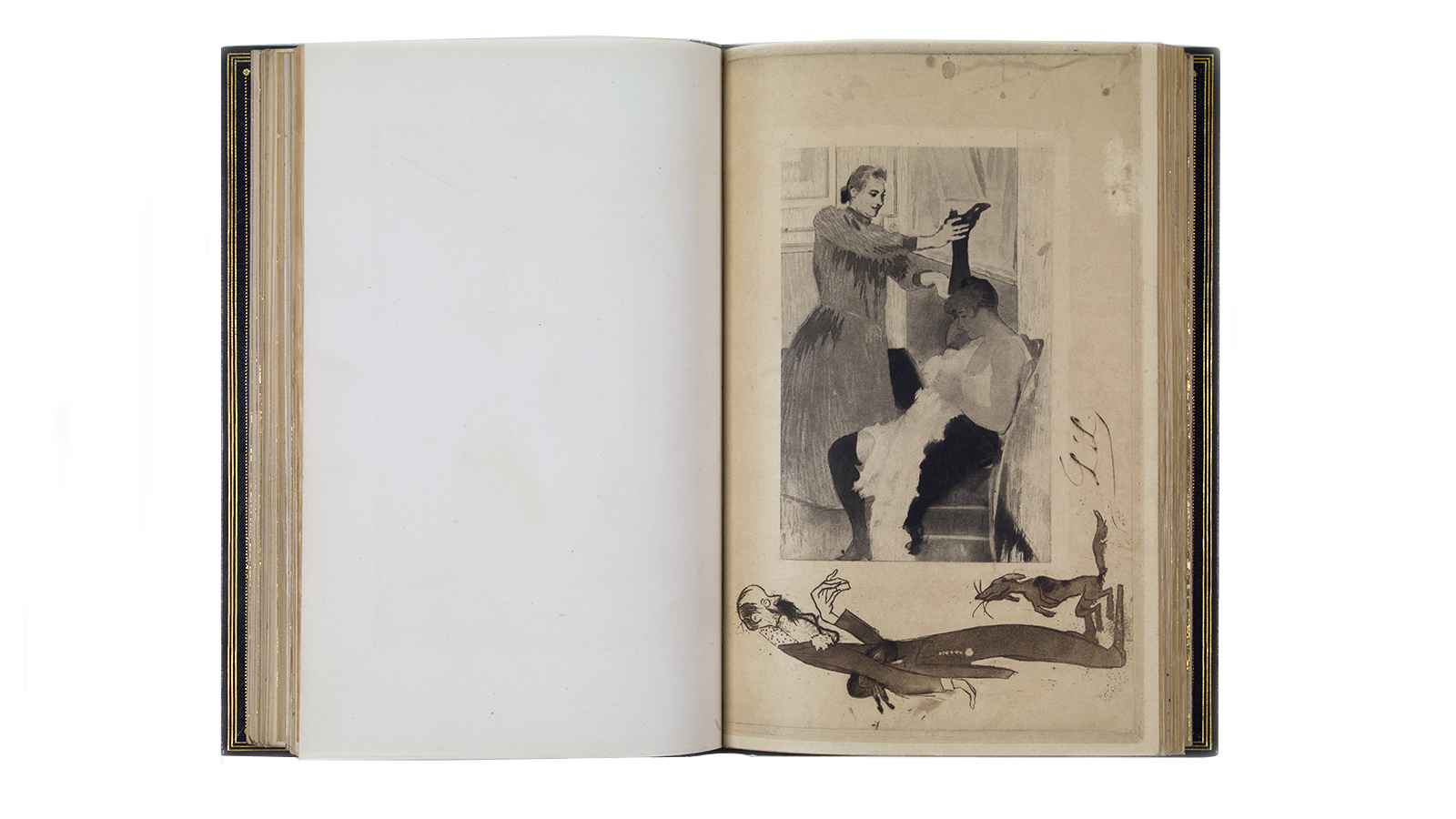
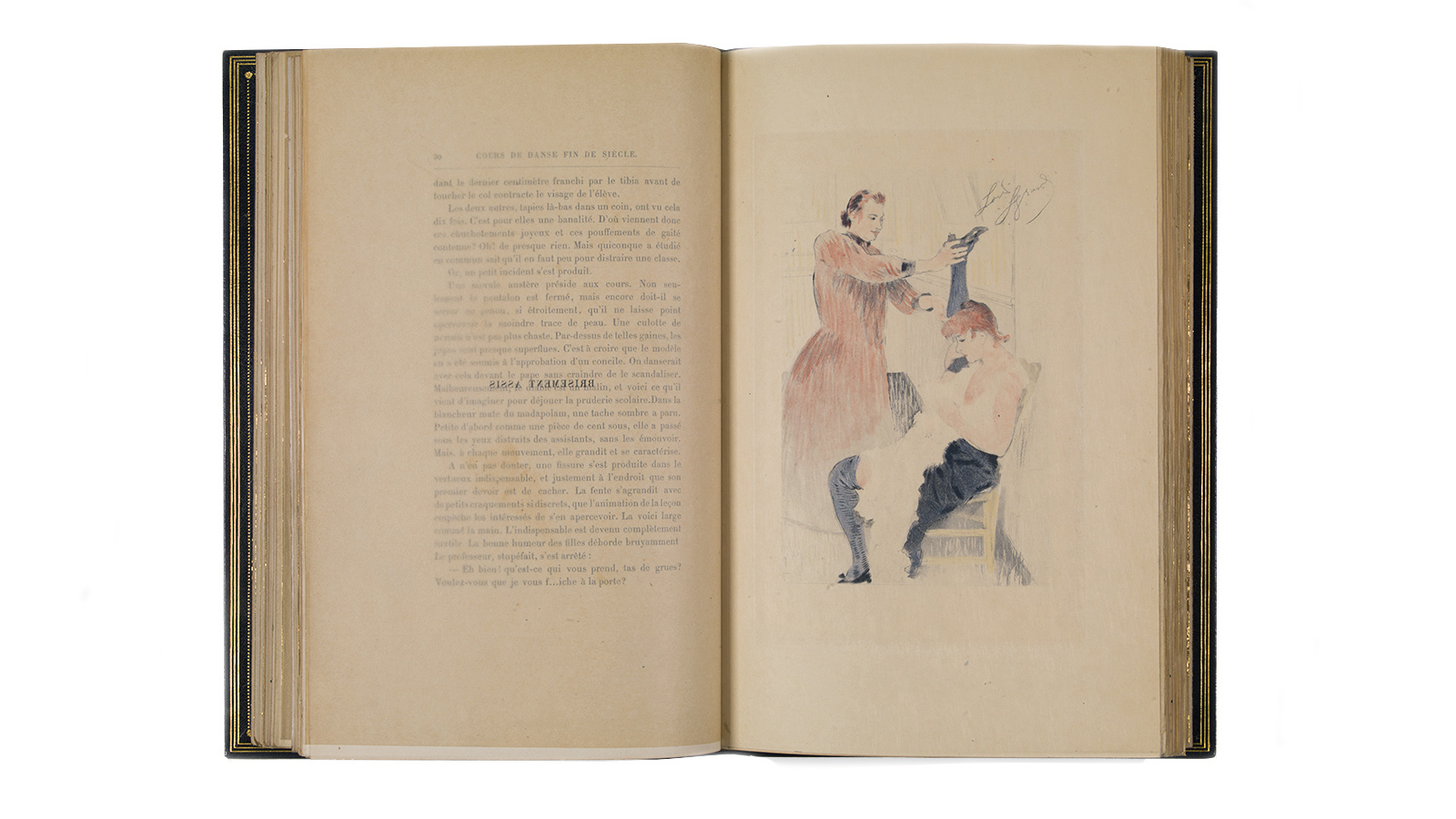
The watercolours by writer and caricaturist Henri Maigrot for Guy de Maupassant’s realist novel La Maison Tellier, originally published in 1881 and in magazine format in 1889 and 1892, use humour, irony and an extremely free relationship between text and image to illustrate the story, written almost two decades earlier, about a group of prostitutes who attend a first communion in a village.
![Guy de Maupassant, La Maison Tellier (detail). [Paris]:, [s.n.], [1897]. Illustrated with watercolours by Henriot, the pseudonym of Henri Maigrot; binding by Émile Carayon. Unique and handwritten copy on paper. Calouste Gulbenkian Museum](https://gulbenkian.pt/museu/wp-content/uploads/sites/5/2023/02/ajax-6120.jpg)
![Guy de Maupassant, La Maison Tellier (detail). [Paris]:, [s.n.], [1897]. Illustrated with watercolours by Henriot, the pseudonym of Henri Maigrot; binding by Émile Carayon. Unique and handwritten copy on paper. Calouste Gulbenkian Museum](https://gulbenkian.pt/museu/wp-content/uploads/sites/5/2023/02/ajax-6121.jpg)
![Guy de Maupassant, La Maison Tellier (detail). [Paris]:, [s.n.], [1897]. Illustrated with watercolours by Henriot, the pseudonym of Henri Maigrot; binding by Émile Carayon. Unique and handwritten copy on paper. Calouste Gulbenkian Museum](https://gulbenkian.pt/museu/wp-content/uploads/sites/5/2023/02/ajax-6123.jpg)
Lastly, the binding of Paris dansant, in a language resembling that of advertising, includes iconic images of the city, from the windmill to the black cat. These illustrations were created by Adolphe Willette, an artist who worked for magazines such as Le Chat Noir and was involved in the decoration of cabarets like the Moulin Rouge and the design of markedly commercial products, such as restaurant menus, posters and fans.
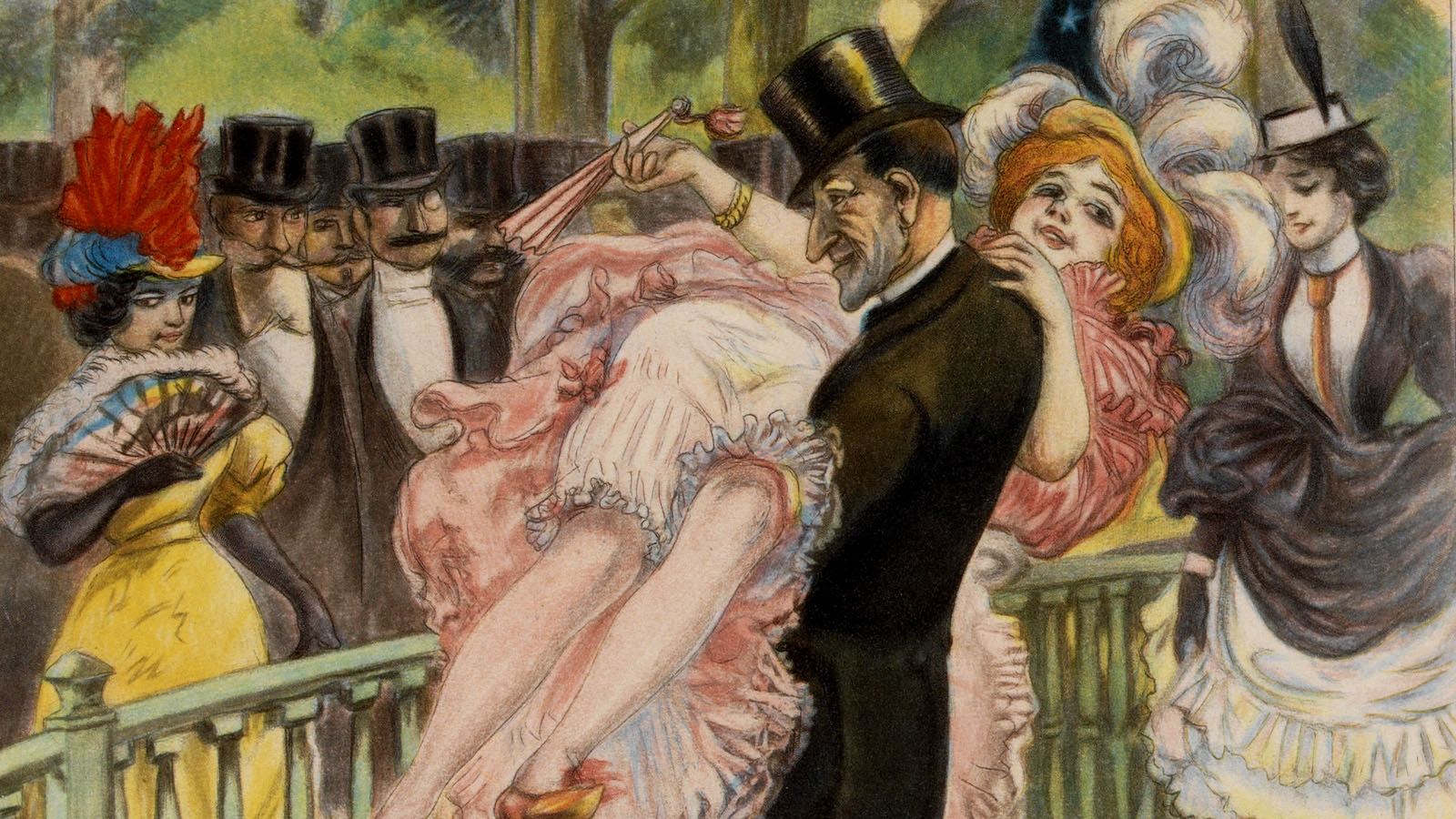
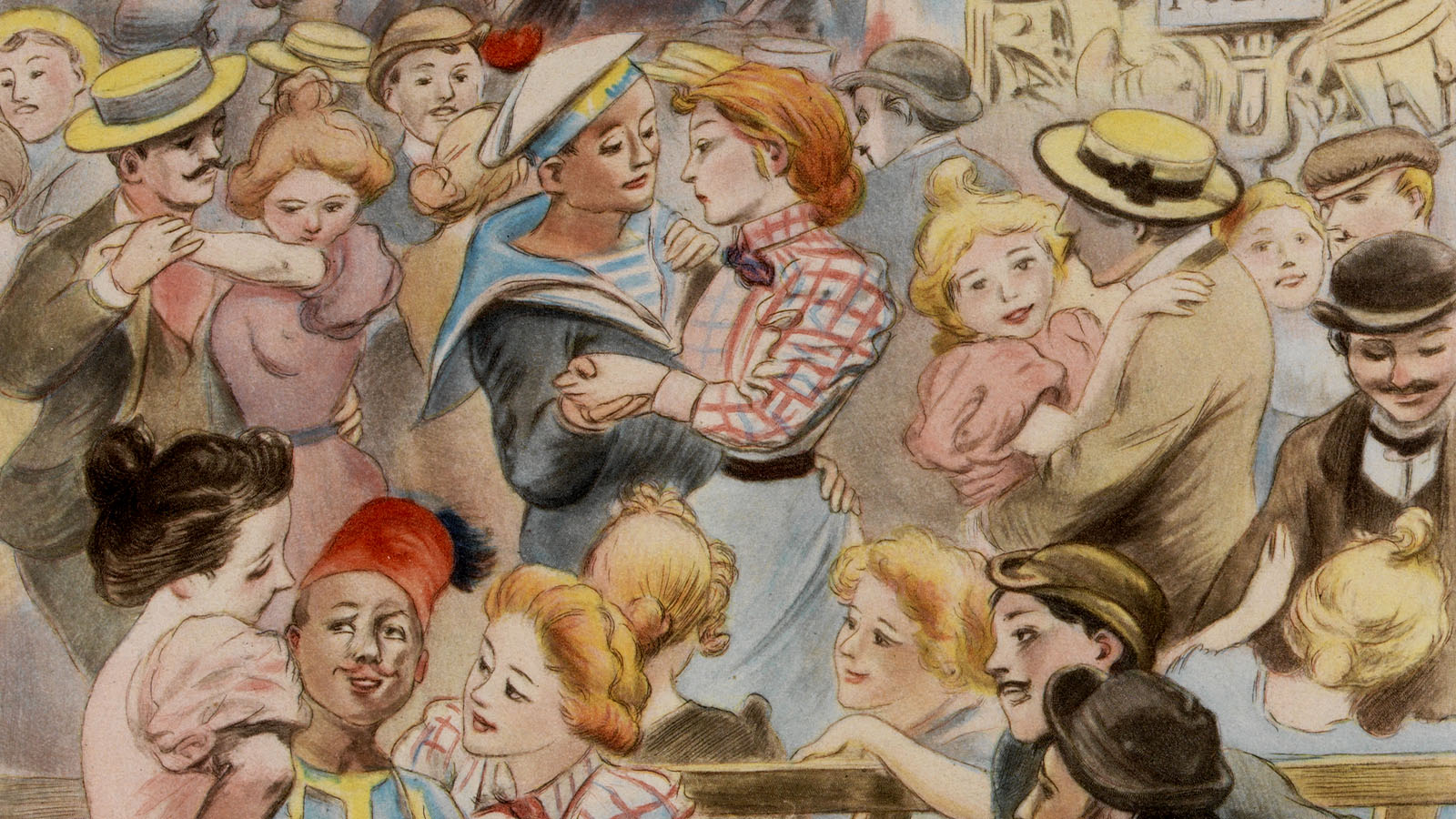
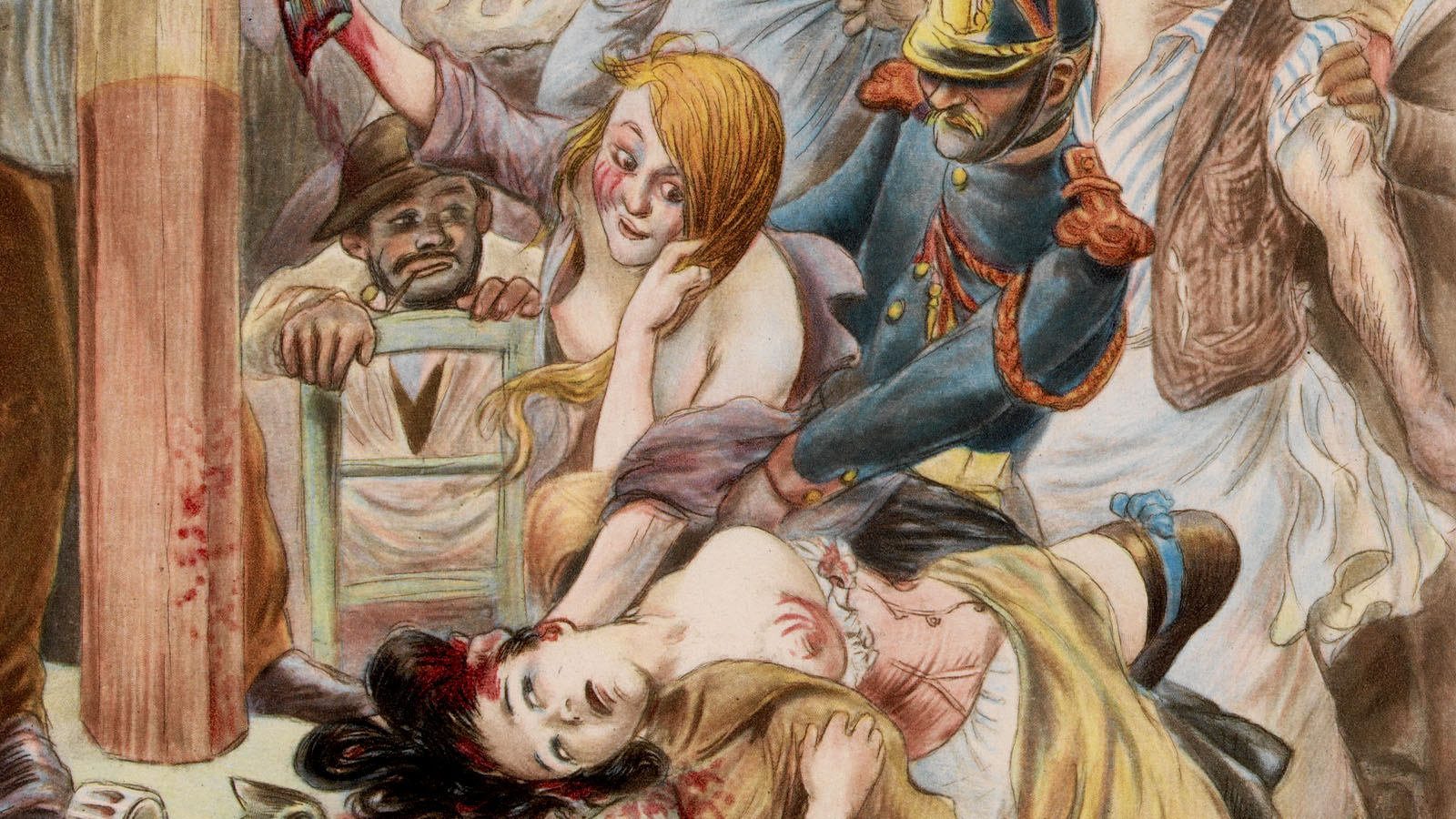
In addition to the daring themes depicted in the illustrations, these books stands out for the innovation and experimentation visible in some of the bindings. In some cases the watercolours are painted directly on the vellum by the illustrators, a novelty compared to traditional bindings decorated using gold tooling or leather inlays. There are also ‘Bradel’ bindings, a technique created in the 18th century to simplify and reduce the cost of the binding process and developed further between 1890 and 1900 by Émile Carayon, who started to apply it to luxury editions thanks to the use of premium materials such as morocco leather, calfskin and white vellum leather.

